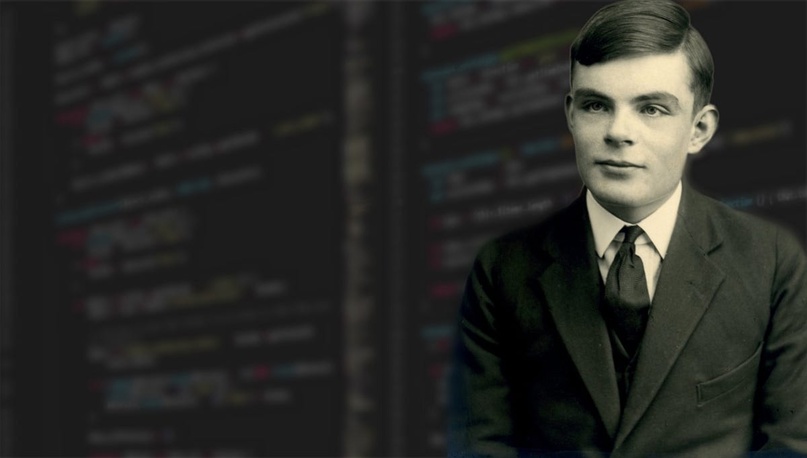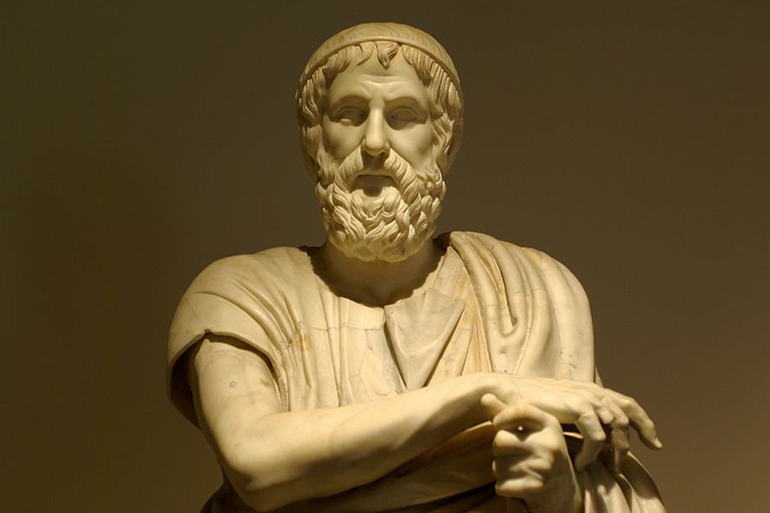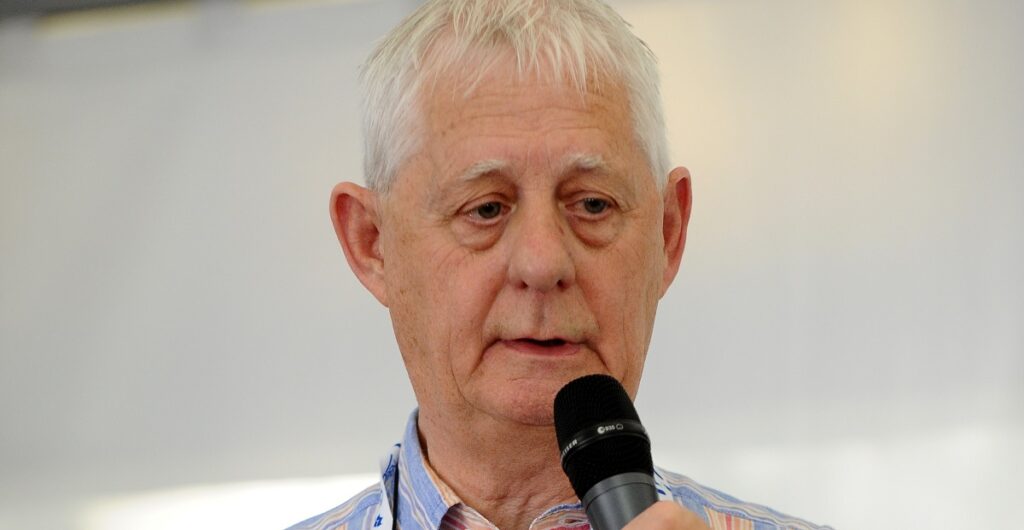Alan Turing Quotes

Life-Changing Insights
Acknowledging the Pioneers Work at Bletchley Park
The world of computer science and mathematics has been revolutionized by a plethora of groundbreaking individuals who have paved the way for innovation and progress. However, one institution stands out as a beacon of ingenuity and brilliance, namely Bletchley Park.
This historic site in Milton Keynes, England was the hub of code-breaking activity during World War II, where an elite team of mathematicians and computer scientists worked tirelessly to crack the German Enigma code. Their tireless efforts ultimately shortened the war by two years and saved countless lives.
At the forefront of this remarkable achievement were pioneers such as Alan Turing, who played a pivotal role in developing the theoretical foundations of modern computer science. His work at Bletchley Park, where he spearheaded the team tasked with cracking Enigma, showcased his exceptional problem-solving skills and unwavering dedication to his craft.
Through his groundbreaking work on the Automatic Computing Engine (ACE) and the development of the theoretical framework for modern computers, Turing demonstrated an uncanny ability to bridge the gap between mathematics and computer science. His vision of a universal machine that could perform any calculation imaginable laid the foundation for the development of modern computing.
The far-reaching impact of Turing’s work cannot be overstated, as it has inspired generations of mathematicians, scientists, and engineers to push the boundaries of what is possible with technology. His influence can be seen in fields such as artificial intelligence, machine learning, and cryptography, all of which owe a debt of gratitude to his pioneering spirit.
As we continue to navigate the complexities of an increasingly digital world, it is essential that we remember the pioneers who have paved the way for our technological advancements. By acknowledging their groundbreaking work, we can ensure that their legacy lives on and inspires future generations of innovators and thinkers.
Turing’s Key Contributions:
- The development of the theoretical framework for modern computers, including the concept of the universal machine.
- The creation of the Automatic Computing Engine (ACE), a pioneering computer design that laid the foundation for modern computing.
- His work on code-breaking at Bletchley Park, where he played a crucial role in cracking the German Enigma code.
The Lasting Impact:
- Artificial intelligence and machine learning have been significantly influenced by Turing’s work on the concept of the universal machine and his development of algorithms for solving problems.
- Cryptography has also benefited greatly from Turing’s contributions, as his work on code-breaking laid the foundation for modern encryption techniques.
- Computing and computer science have been forever changed by Turing’s vision of a machine that could perform any calculation imaginable, paving the way for the development of personal computers and mobile devices.
As we reflect on the remarkable achievements of Alan Turing and the team at Bletchley Park, we are reminded of the transformative power of human ingenuity and collaboration. Their groundbreaking work has left an indelible mark on our world, inspiring future generations to push the boundaries of what is possible with technology.
Contributions to codebreaking during World War II
The contributions made by Alan Turing during World War II were instrumental in altering the course of history and providing life-changing insights into the realm of codebreaking. His pioneering work laid the foundation for the development of modern computer science and has had a lasting impact on the world.
Turing’s involvement with the Government Code and Cypher School (GC&CS) at Bletchley Park was instrumental in cracking the German Enigma code, which is widely regarded as one of the most significant intelligence victories of the war. The breaking of this code gave the Allies crucial insights into German military plans and operations, allowing them to adapt their strategies accordingly.
One of Turing’s most important contributions to codebreaking was his development of the Bombe machine, a mechanical device designed to help decipher the Enigma code. The Bombe was an improvement on the earlier Polish bomba, and it played a significant role in speeding up the decryption process.
Turing’s work also extended to other areas of cryptography, including the breaking of the Lorenz cipher, which was used by the Germans for communication between their high command. He developed a machine called the “Tunny” to help decipher this code, and his team’s efforts ultimately led to the decryption of over 38,000 messages.
Through his work on codebreaking, Turing demonstrated that it is possible to analyze complex patterns and identify hidden relationships, which are essential skills in any field where problem-solving is required. His insights have had a lasting impact on fields such as computer science, artificial intelligence, and cryptography.
Turing’s legacy extends beyond his technical contributions, however. He has become an icon of the LGBTQ+ community, whose members often celebrate him for his courage and resilience in the face of persecution. In 1952, Turing was convicted of gross indecency for his relationship with a man, which led to his loss of security clearance and ultimately contributed to his tragic death by cyanide poisoning.
Despite this tragic end, Turing’s life-changing insights into codebreaking continue to inspire people around the world. His pioneering work has paved the way for advances in technology and cryptography, while also serving as a powerful reminder of the importance of challenging societal norms and embracing diversity.
Development of the Automatic Computing Engine (ACE)
The development of the Automatic Computing Engine (ACE) was a pivotal moment in the history of computer science, and it is largely attributed to the work of Alan Turing.
Turing’s contributions to the field of computer science are undeniable, but his work on the ACE project provides a unique window into his thought process and vision for the future of computing.
During World War II, Turing worked at the National Physical Laboratory (NPL) in London, where he was tasked with developing a machine that could solve complex mathematical problems quickly and efficiently.
The need for such a machine was pressing, as many of the calculations required to crack German codes were too time-consuming to be done manually.
Turing’s solution was to design a machine that used a combination of logic and arithmetic units to perform calculations at an unprecedented speed.
The ACE was a groundbreaking piece of engineering that laid the foundations for modern computing. Its impact extended far beyond the immediate need for code-breaking, however.
It paved the way for the development of commercial computers in the 1950s and provided the basis for much of the computer science research that followed.
In many ways, Turing’s work on the ACE represents a turning point in his career. It was during this time that he began to articulate his ideas about computation and intelligence, which would later become known as the Turing Test.
The ACE project also showcased Turing’s ability to think creatively and outside the box. His design for the machine was innovative and well ahead of its time.
One of the most significant aspects of the ACE project is the way it demonstrates Turing’s understanding of the importance of software in computing.
Although the hardware was a crucial part of the machine, Turing recognized that the real power of the computer lay in the software programs that ran on top of it.
This recognition laid the groundwork for the development of high-level programming languages and the creation of modern software engineering practices.
In many ways, the ACE project represents a defining moment in the history of computer science. It showcases Turing’s vision, creativity, and innovative spirit, and it paved the way for the rapid advancement of computing technology that followed.
As we reflect on the life and work of Alan Turing, it becomes clear that his contributions to computer science are immeasurable. The ACE project stands as a testament to his enduring legacy in this field.
Some key facts about the Automatic Computing Engine (ACE)
- The ACE was designed by Alan Turing and his team at the National Physical Laboratory (NPL) in London.
- The machine was intended to perform complex mathematical calculations quickly and efficiently.
- The ACE used a combination of logic and arithmetic units to process information.
- It paved the way for the development of commercial computers in the 1950s.
- The project showcased Turing’s understanding of the importance of software in computing.
Groundbreaking Research and Theories
The field of computer science has been significantly impacted by the groundbreaking theories proposed by Alan Turing, a British mathematician and computer scientist.
Turing’s most notable contribution to the development of artificial intelligence was his theory of the universal Turing machine, which laid the foundation for modern computer design.
Another influential concept put forth by Turing is the idea of the Turing test, where a human evaluator engages in natural language conversations with both a human and a machine without knowing which one is which, to determine whether or not the machine is capable of thinking like a human being.
This theory sparked extensive debate about the nature of intelligence and its potential to be replicated in machines, leading to numerous studies in artificial intelligence research.
The Cambridge mathematician and computer scientist proposed that a machine can only truly be considered intelligent if it possesses three fundamental characteristics: thinking, learning, and reasoning.
Turing also offered his insights on the concept of human-computer interaction, arguing that machines could never fully replace human communication due to their inability to understand nuances in language and emotions.
His research has played a significant role in shaping our understanding of computer science and its potential applications in various fields, including mathematics and artificial intelligence.
Turing’s vision for the future of computer science emphasizes the importance of interdisciplinary collaboration between mathematicians, computer scientists, and philosophers to advance human knowledge and push the boundaries of innovation.
Theoretical foundations of computation and algorithms
The theoretical foundations of computation and algorithms are essential components that underlie the principles of computer science and have far-reaching implications for our understanding of Life-Changing Insights, as exemplified by the work of Alan Turing.
Alan Turing’s contributions to the field of mathematics and computer science were revolutionary in their impact on our comprehension of computation and its theoretical foundations. His work laid the groundwork for the development of modern computers and has had a profound effect on the way we approach problems related to artificial intelligence, machine learning, and cryptography.
Turing’s most significant contribution is perhaps his theoretical model of the universal Turing machine, which serves as a basis for understanding what can be computed by any algorithm. This model highlights the limitations of computation while also providing an insight into the power of algorithms in solving problems that would otherwise be unsolvable.
One fundamental concept arising from this theory is that there are limits to what can be achieved through computation. The halting problem, formulated by Turing in 1936, demonstrates that there cannot exist a general algorithm to determine whether a given program will run forever or eventually stop running. This paradox underscores the significance of recognizing these limits when creating algorithms and highlights their importance in solving problems.
Turing’s work has influenced generations of scientists, mathematicians, and engineers and continues to play an integral role in the ongoing quest for Life-Changing Insights through the application of theoretical foundations of computation and algorithms. His legacy extends beyond computer science, influencing our understanding of information, knowledge, and human intelligence.
Theoretical foundations of computation and algorithms offer profound insights into the nature of computation itself. These theories enable us to evaluate and optimize the efficiency of algorithms in solving complex problems, an essential aspect of advancing our capabilities in various fields such as cryptography, optimization problems, data encryption, and machine learning.
Concept of the Universal Turing Machine
The concept of the Universal Turing Machine is a fundamental idea in the field of computer science, proposed by Alan Turing in his seminal work “On Computable Numbers.” This notion revolutionized the way we think about computation and has far-reaching implications for our understanding of life-changing insights.
Turing’s idea was to create a machine that could simulate the behavior of any other machine, given an appropriate program. He posited that there exists a Universal Machine (UM) capable of running any algorithm on any input, regardless of its complexity or size.
The Universal Turing Machine is essentially an idealized model of computation, which represents the abstract notion of a computer program. It has an infinite tape divided into cells, each containing a symbol from a finite alphabet. The machine reads and writes symbols on the tape, performing computations based on a set of predefined rules.
The key insight behind the Universal Turing Machine is that it can simulate any other Turing machine, given its program and initial tape contents. This means that if we have a particular problem or algorithm in mind, we can translate it into a Turing machine language and run it on the UM.
This concept has profound implications for our understanding of computation and the nature of intelligence. It shows that any computational task can be reduced to a set of abstract rules and instructions, which can be executed by a universal machine.
In many ways, the Universal Turing Machine is an embodiment of Alan Turing’s famous quote: “We can only see a short distance ahead, but we can see plenty there that needs to be done.” The concept represents a fundamental shift in our understanding of computation and its potential applications, offering new avenues for exploration and discovery.
The Universal Turing Machine has had a profound impact on the development of modern computer science, inspiring advances in fields such as artificial intelligence, cryptography, and algorithm design. Its influence extends far beyond the realm of computer science, influencing our understanding of the nature of computation and the limits of what is possible.
As Turing himself noted, “The idea that a machine can simulate any other machine given an appropriate program has far-reaching implications for our understanding of life-changing insights.” The concept of the Universal Turing Machine represents a fundamental shift in our understanding of computation and its potential applications, offering new avenues for exploration and discovery.
The legacy of Alan Turing’s work continues to inspire new generations of scientists and researchers, as they seek to push the boundaries of what is possible. The concept of the Universal Turing Machine remains a testament to Turing’s boundless curiosity and innovative spirit, a reminder of the transformative power of human ingenuity.
In conclusion, the concept of the Universal Turing Machine represents a fundamental shift in our understanding of computation and its potential applications. Its influence extends far beyond the realm of computer science, influencing our understanding of the nature of computation and the limits of what is possible.
Celebrating His Intellectual Legacy
Pioneering Contributions to Computer Science
Turing’s intellectual legacy extends far beyond his pioneering contributions to computer science, which are still widely recognized today.
He is best known for proposing the theoretical foundations of modern computer science, including the concept of the universal Turing machine, which laid the groundwork for the development of the first practical computers.
In addition to his work in computer science, Turing also made significant contributions to mathematics and logic, particularly in the areas of cryptography and number theory.
His work at the Government Code and Cypher School during World War II played a crucial role in cracking the German Enigma code, which gave Allied forces valuable information about enemy operations.
Turing’s mathematical work also included his development of the Automatic Computing Engine (ACE), one of the first practical computers, as well as his work on the concept of artificial intelligence and the idea of machines that could simulate human thought processes.
In recognition of his contributions to science and mathematics, Turing received numerous honors and awards during his lifetime, including a CBE (Commander of the Order of the British Empire) in 1945 for his work at the Government Code and Cypher School.
Pioneering Contributions:
- The Universal Turing Machine: In 1936, Turing proposed a theoretical model of computation known as the universal Turing machine. This concept posits that any computer can be programmed to simulate the behavior of another computer, making it a fundamental principle of modern computer science.
- The Automatic Computing Engine (ACE): Developed in collaboration with others, ACE was one of the first practical computers built in the UK. It used vacuum tubes and punched cards to perform calculations and was used for various scientific and engineering applications.
- Cryptography: Turing’s work at Bletchley Park during World War II helped crack the German Enigma code, which played a crucial role in Allied intelligence gathering and military strategy.
The Enduring Impact of Turing’s Legacy:
Turing’s legacy extends far beyond his pioneering contributions to computer science. His work on artificial intelligence, cryptography, and number theory has had a lasting impact on the development of modern science and technology.
Today, Turing is celebrated as one of the most important figures in the history of computer science, with many institutions and organizations recognizing his achievements and contributions.
Development of the theoretical foundations for modern computer science
Alan Turing’s intellectual legacy continues to shape the field of modern computer science in profound ways. His work laid the foundation for many fundamental concepts that have become cornerstones of computer science, including algorithms, artificial intelligence, and computational complexity.
Turing’s theoretical contributions can be seen in his development of the conceptual framework for a universal Turing machine, which has had far-reaching implications for our understanding of computability. His work also established the concept of the halting problem, demonstrating that there are limits to what is computable with an algorithm. This insight has been instrumental in shaping the field of theoretical computer science.
Turing’s paper “On Computable Numbers” introduced the idea of a universal machine that can simulate the behavior of any other Turing machine, thus establishing the notion of computational equivalence. This fundamental concept has had a lasting impact on our understanding of what it means to compute and how we can model complex systems using computational models.
Furthermore, Turing’s work on the development of artificial intelligence predated the modern field by decades. His 1950 paper “Computing Machinery and Intelligence” explored the possibility of creating machines that could simulate human thought processes, laying the groundwork for the field of artificial intelligence as we know it today.
The theoretical foundations laid by Turing have influenced generations of computer scientists who have built upon his work to develop new ideas and techniques. His legacy extends far beyond his own research contributions to include a broader understanding of what is possible with computational machines and the potential for machine learning and artificial intelligence to improve our daily lives.
Recognition by the British government
The recognition by the British government for Alan Turing’s intellectual legacy marks a significant milestone in celebrating his contributions to computer science and mathematics.
Turing’s work at Bletchley Park during World War II, where he led the team that cracked the German Enigma code, is widely regarded as one of the most important intelligence achievements of the 20th century.
The British government has recognized Turing’s impact on modern computing and mathematics through various initiatives, including:
- The Alan Turing Institute: a national institute for data science that aims to advance knowledge in this field
- Turing Award: a prestigious prize given annually by the Association for Computing Machinery (ACM) to recognize outstanding contributions to computer science and information technology
- Alan Turing Memorial Statue: a statue unveiled in 2001 in Manchester, where Turing worked at the University of Manchester
- Turing Centenary Celebrations: a series of events held in 2012 to commemorate Turing’s life and work
The recognition also extends to the naming of various awards, prizes, and institutions after Turing, such as:
- The Alan Turing Award for Outstanding Contributions to Computer Science and Information Technology
- Turing Prize: awarded by the British Computer Society to recognize outstanding contributions to computer science and information technology
- Turing Lecture: a prestigious lecture series organized by the IEEE Computer Society to promote research in computing and related fields
The recognition by the British government serves as a testament to Turing’s enduring legacy in the world of computer science and mathematics, inspiring future generations of scientists, engineers, and innovators.
Personal Struggle with Persecution and Identity
Turing’s intellectual legacy is a testament to his groundbreaking work in mathematics, computer science, and logic. He is widely considered one of the most influential thinkers of the 20th century, and his contributions to the development of computer science have had a lasting impact on modern technology.
However, Turing’s personal struggles with persecution and identity were deeply intertwined with his intellectual pursuits. As a homosexual man living in a time when same-sex relationships were heavily stigmatized and punishable by law, Turing faced intense scrutiny and harassment from the authorities.
In 1952, Turing was arrested and charged with gross indecency for his relationship with a 19-year-old man, which led to his conviction and subsequent chemical castration. This event marked a dark chapter in Turing’s life, as he was subjected to forced medication that would suppress his libido and render him infertile.
Despite these personal challenges, Turing continued to work on his pioneering computer projects, including the development of the Automatic Computing Engine (ACE), which would go on to influence the design of modern computers. His contributions to the field of artificial intelligence were also groundbreaking, as he proposed a theoretical model for machine learning and decision-making.
Today, Alan Turing’s legacy is celebrated not only for his intellectual achievements but also for his courage in standing up against persecution and challenging societal norms. His story serves as a powerful reminder of the importance of diversity, inclusivity, and acceptance, and his work continues to inspire new generations of scientists, engineers, and thinkers.
The Turing Award, considered the “Nobel Prize of computing,” was established in 1966 to recognize outstanding contributions to computer science. It is fitting that this award bears Turing’s name, as it honors his enduring legacy and commitment to advancing our understanding of the world through technology and innovation.
Campaign for gay rights in Britain during his lifetime
The legacy of Alan Turing, a British mathematician, computer scientist, and logician, continues to inspire and educate people around the world. To celebrate his intellectual contributions and fight for his rights as an LGBTQ+ individual, we can reflect on his remarkable life and accomplishments.
Here are some ways to honor his legacy:
- Fund a scholarship or research grant in Turing’s name to support students or researchers who share his passion for mathematics, computer science, and logic.
- Create an online archive of Turing’s papers, letters, and other documents to make them accessible to the public and inspire new generations of scholars.
- Establish a monument or memorial in honor of Turing, recognizing his contributions to computer science and his struggle for gay rights.
- Organize events, lectures, and conferences to discuss Turing’s work, its impact on modern computing, and the importance of promoting diversity and inclusion in STEM fields.
Turing’s legacy is particularly relevant when it comes to advocating for gay rights. He was a pioneer in the fight against homophobia and discrimination, and his experiences are a powerful reminder of the ongoing need to promote LGBTQ+ equality.
Here are some ways to celebrate Turing’s commitment to gay rights:
- Sponsor or participate in Pride events and parades to show support for the LGBTQ+ community and promote visibility and acceptance.
- Create a petition or campaign to raise awareness about ongoing LGBTQ+ issues, such as conversion therapy or hate crimes.
- Develop educational resources and workshops to teach people about LGBTQ+ history, culture, and contributions, promoting empathy and understanding.
By honoring Alan Turing’s intellectual legacy and advocating for gay rights, we can continue his work towards a more inclusive and accepting society.
- Adoring Quotes - October 23, 2024
- Adore Quotes - October 23, 2024
- Adorable Quotes - October 23, 2024



